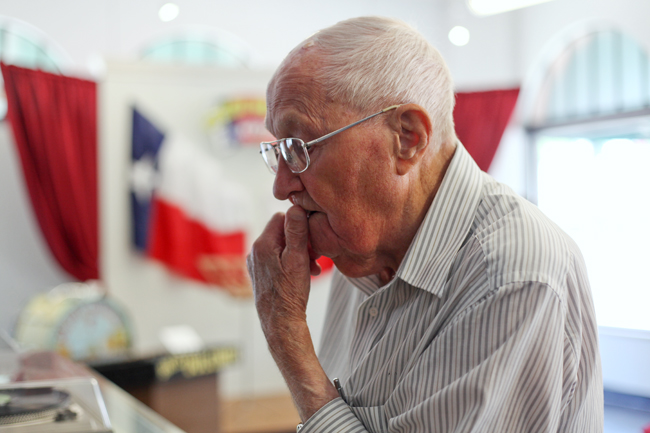One hundred seventy-five years ago, La Grange was nothing more than a sleepy way station between Austin and Houston. Situated on the Colorado River roughly 60 miles southeast of Austin, the village and surrounding Fayette County underwent a transformation beginning in the 1850s, when waves of Czech and German immigrants arrived in the area.
The Czech immigrants who settled there held onto their heritage and language, but also emphasized assimilation through the learning of English, said Retta Chandler, director of the Texas Czech Heritage and Cultural Center in La Grange. The center, first conceived in 1995, seeks to increase awareness of the Texas Czech community through cultural events and exhibits.
After moving into shiny new digs adjacent to the Fayette County Fairgrounds in 2009, the center filled the space with books, paintings, photographs and heirlooms donated by the descendants of Czech immigrants. However, while the excitement over the new collection was a good indicator of the local interest in Czech heritage, it also belied a less encouraging fact about the state of the community: Texas Czech, the local dialect of Czech, is dying.
According to the U.S. English Foundation, a Washington, D.C.-based foundation that promotes the adoption of English as the official language of the U.S., 12,805 Texans spoke Czech as of May. However, Chandler understands that number is ever dwindling.
“[The Czech language] is almost gone,” Chandler said. “I think my generation is probably the end of it.”
Linguists have long observed that immigrant languages tend to die out after just a few generations as the younger generations assimilate to the
dominant culture.
In her 2009 undergraduate thesis on the Czech language in Texas, Pavlina Pintova of Masaryk University in the Czech Republic identifies two causes for the decline of Texas Czech, which she dates to the 1920s: the introduction of Americanization programs in response to World War I and tightened immigration quotas.
According to Lida Cope, director of the Texas Czech Legacy Project based here at UT, the decline picked up speed after World War II, when negative feelings toward Czech slowly built up to a tipping point at which Czech speakers abruptly switched over to English.
To Frank Klinkovsky, an 87-year-old docent at the Czech Heritage Museum Genealogy Center in Temple, this assessment rings painfully true.
“[Things are] changing real fast,” Klinkovsky said. “The Czechs don’t speak up for themselves. They [don’t] teach their kids [the language].”
Klinkovsky grew up on a farm east of Temple, the son of a Moravian father and a Bohemian mother. As a boy, Klinkovsky spoke Czech to his friends and family, but when he went to school, in a rural two-room schoolhouse, the pressure to learn English was strong, from both teachers and parents who didn’t want to hold their children back. English was the only language spoken in school, so to supplement the language he heard at home, he took Czech classes every summer.
After high school, Klinkovsky married a local Czech girl. Her ethnicity wasn’t a mere coincidence.
“I was a little bit particular that she was Czech,” Klinkovsky said. “I don’t know why … because I talked Czech, and I kind of wanted her to.”
It wasn’t an easy courtship, however.
“It was kind of a hassle,” Klinkovsky said. “One time I was going to go see her … and I was going down a gravel road … and I got into some loose gravel on the side of the road. The tail end got sliding sideways and I over-corrected, and the car rolled over and landed upright on its wheels.”
Luckily, Klinkovsky wasn’t severely injured, and the couple went on to be married for 55 years. Somewhat ironically, Klinkovsky’s progeny have followed the pattern of the Texas Czech community and don’t speak Czech beyond a few songs and stock phrases.
When Klinkovsky’s great-granddaughter was born three years ago, he had a new opportunity to pass on the language, but limited contact and other priorities made that unfeasible.
“I probably should be teaching her some Czech,” Klinkovsky said. “I don’t know … That would be nice.”
Like Klinkovsky, Georgia Kovar, a native speaker of Texas Czech, seems to have resigned herself to the fact that there’s not much hope for saving the language in Texas.
“There’s hardly anybody I can talk Czech to anymore,” Kovar said.
Although the center has offered Czech classes in the past, the trends are undeniable.
Still, Chandler believes it’s worth trying to save the language.
“It’s such an important part of our identity,” Chandler said. “It’s something we should be proud of.”





















